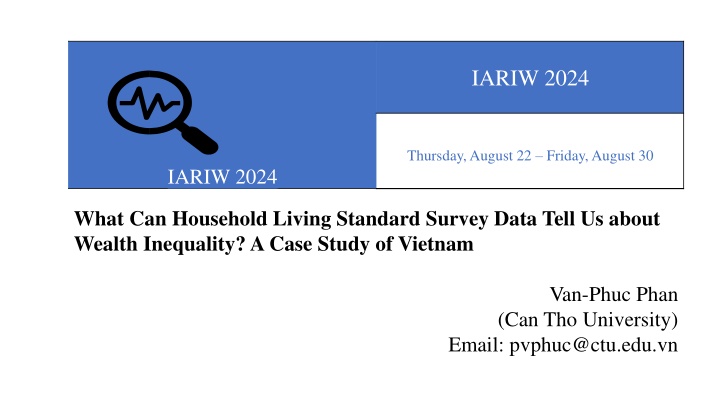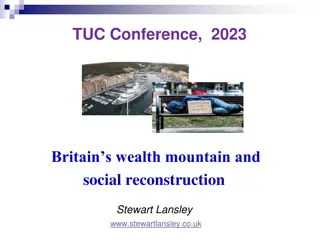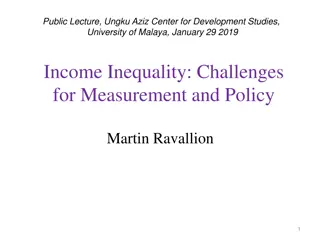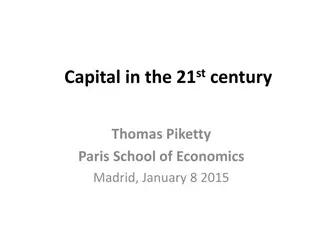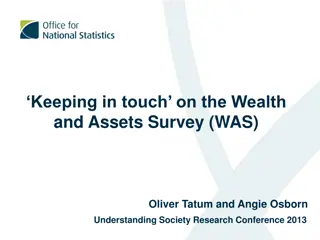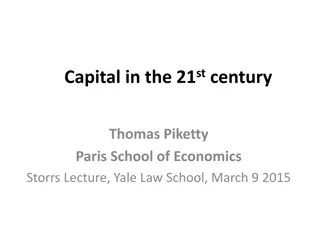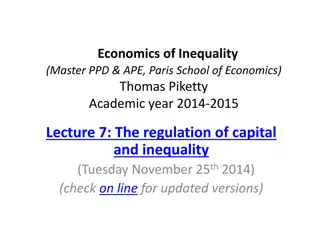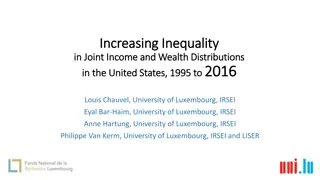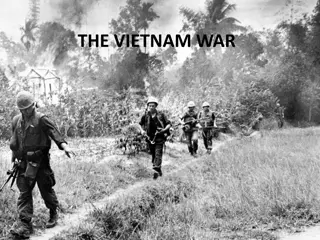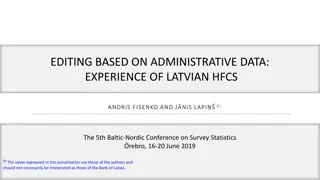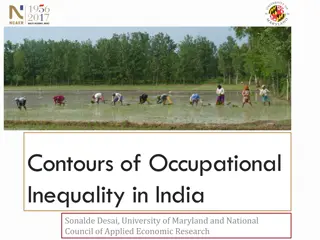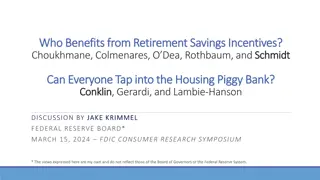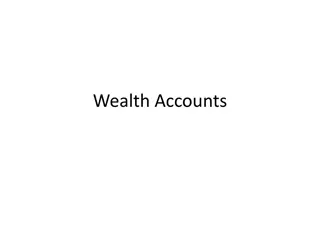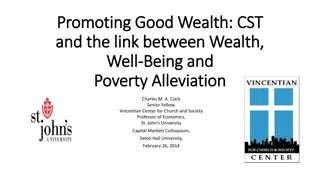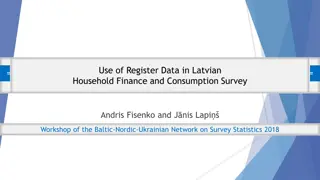Wealth Inequality in Vietnam: Insights from Household Survey Data
Shedding light on wealth distribution in Vietnam compared to income inequality, exploring data trends from 2012 to 2020. Comparisons between VHLSS and WID surveys provide valuable insights into wealth distribution dynamics in the region.
Download Presentation

Please find below an Image/Link to download the presentation.
The content on the website is provided AS IS for your information and personal use only. It may not be sold, licensed, or shared on other websites without obtaining consent from the author.If you encounter any issues during the download, it is possible that the publisher has removed the file from their server.
You are allowed to download the files provided on this website for personal or commercial use, subject to the condition that they are used lawfully. All files are the property of their respective owners.
The content on the website is provided AS IS for your information and personal use only. It may not be sold, licensed, or shared on other websites without obtaining consent from the author.
E N D
Presentation Transcript
IARIW 2024 Thursday, August 22 Friday, August 30 IARIW 2024 What Can Household Living Standard Survey Data Tell Us about Wealth Inequality? A Case Study of Vietnam Van-Phuc Phan (Can Tho University) Email: pvphuc@ctu.edu.vn
Ex ante questions Ex ante questions How should we think about wealth inequality in Vietnam? Still mostly state-owned enterprises? Private business ownership becoming more important 2012 to 2020? What does it mean to own a house is it tradable? How value determined? Is wealth inequality versus income inequality like other countries? Levels (wealth inequality generally>income inequality) Trends (inequality rising around world, but not so much 2012 to 2020?) How does inequality in VHLSS survey compare to WID? What are the empirical differences? What are the conceptual differences? Is population coverage a problem?
Objective & Background The paper aims to shed light on the evolution of the Vietnamese wealth distribution compared to income inequality, 2012 20. Statistical data show that: The Gini of income is moderate and levelled off in Vietnam. But, the top 10% share is as high as in other Asian countries. Figure 1. Top 10% share of the national wealth in Asia Source: World Inequality Database (2023)
How do VHLSS and WID compare? How do VHLSS and WID compare? Income inequality very different in WID and VHLSS WID top 10%=60%, VHLSS=30% But both series show little change 2012 to 2020 Wealth inequality also lower in VHLSS WID top 10% share=59%, VHLSS=49% Is this conceptual (financial assets?) or maybe population coverage? Wealth inequality falling slightly in VHLSSS Gini: .63 to .61 Top 10% share: 49% to 48% Also no trend in WID top 10% share
Data and Methodology *Data: Vietnam Household Living Standard Survey, 2012 20. *Methodology - Household (non-financial)wealth + housing properties, durable goods, and liabilities - Measurement of inequality + The Gini coefficient: ???? = 1 +1 ? + Generalised Entropy: 1 2 1 2?2 ? ? ? + 1 ?? (1) 2 ?? ? ??(? = 2) = ?? 1 (2)
Data and Methodology (cont) - Inequality decomposition + Gini decomposition: ?=? ? ? = ???? (2) ?=1 + Regression-based decomposition: ? ? = ? ? + ? (3) where: ? = ?0+ ?=1 ??and ??: wealth determinant k and its associated weight; ? ? : Gini coef. of wealth p.c; ??: share in total wealth of the asset ?; ??is Gini index of the asset ?. ? ????
Findings *Wealth inequality & its components: Housing worth 0.342 54.26 0.311 50.09 0.204 35.59 0.224 36.51 Consumer Durables 0.287 45.60 0.309 49.59 0.400 65.86 0.387 63.06 Debt Total wealth 0.630 100 0.622 100 0.607 100 0.613 100 Gini of income 0.401 0.394 0.399 0.389 Absolute Share (%) Absolute Share (%) Absolute Share (%) Absolute Share (%) 0.001 0.14 0.002 0.32 0.003 0.55 0.002 0.43 2012 2014 2018 2020
Findings (cont) *Wealth inequality & its components: - Vietnam experienced a moderate and gradually declining wealth inequality, from 2012 to 2020; - Wealth inequality was much higher than income inequality; - For contribution to the total inequality, housing worth was more important than consumer durables at the early stage (2012 14), but the reserve is true for the later period (2018 20).
Findings (cont) *Why did wealth inequality go slightly down in Vietnam? - High proportion of housing property ownership (over 80% of households possessed their accommodation!). - Less importance of human resources in wealth accumulation
Conclusion and Policy Implication - Data scarcity of household wealth matters (no info on financial assets!) - Vietnam experienced a moderate and decreased wealth inequality, which is consistent with income inequality; - Public policy on housing development and distribution is crucial for reducing wealth inequality. - Improvements in the knowledge and skills of the poor are noteworthy for closing the wealth gap. - Off-farm livelihoods are likely to lessen wealth inequality.
This point about the shift in rural v urban samples seems potentially important. In one sense, there is only a small difference in Gini anyway But is this why the role of durables versus housing changed dramatically in 2016? Should the survey weights capture the shift?
Ex Post Questions ( Ex Post Questions (green How should we think about wealth inequality in Vietnam? Mostly state-owned enterprises? Private ownership becoming more important 2012 to 2020? What does it mean to own a house tradable? How is value determined? green=>would like to see more) =>would like to see more) Is wealth inequality consistent with income inequality? Levels (wealth inequality generally>income inequality) Trends (inequality rising, but not so much 2012 to 2020?) How does inequality in survey compare to WID? What are the empirical differences? What are the conceptual differences? Is population coverage a problem?
